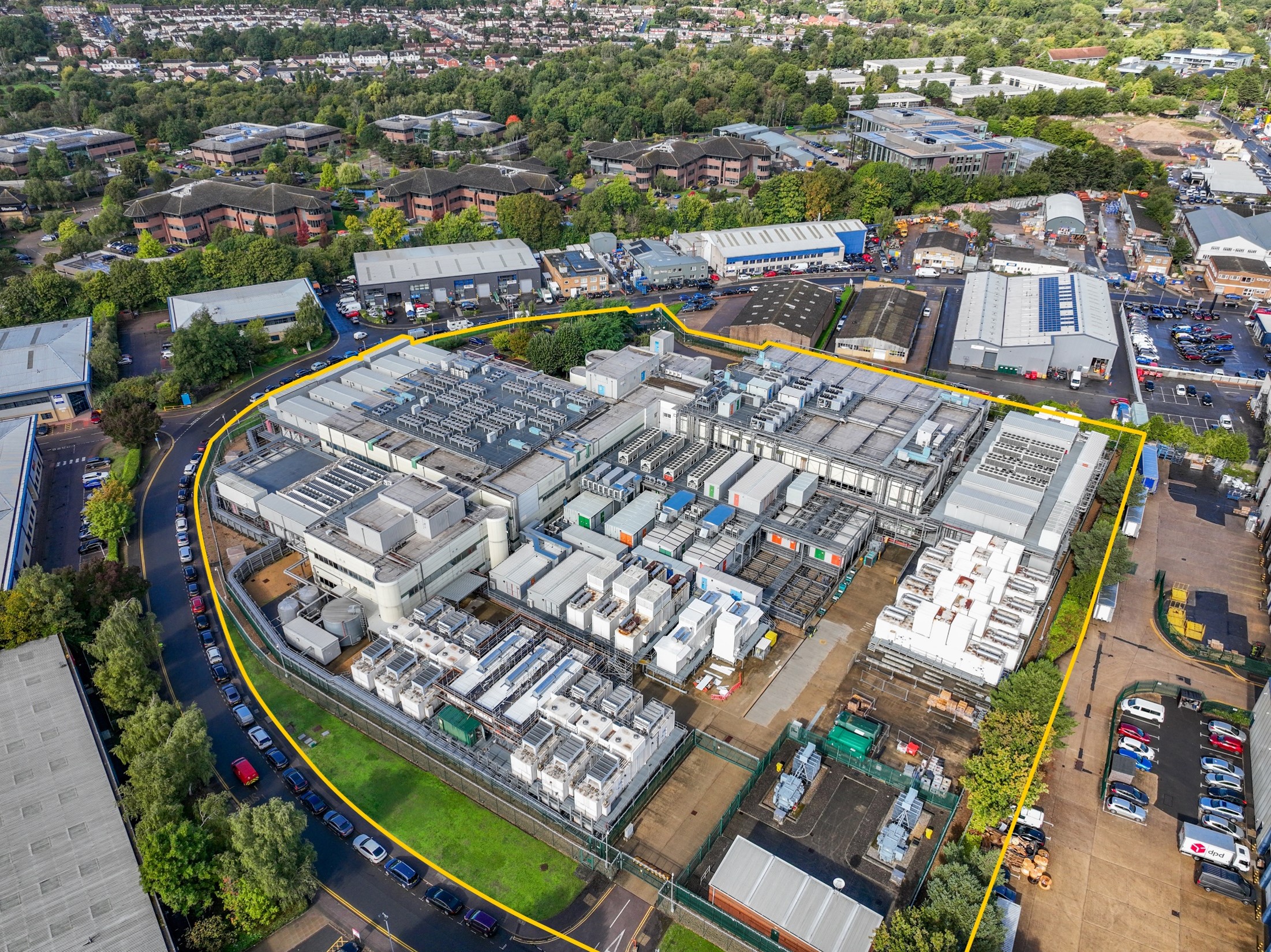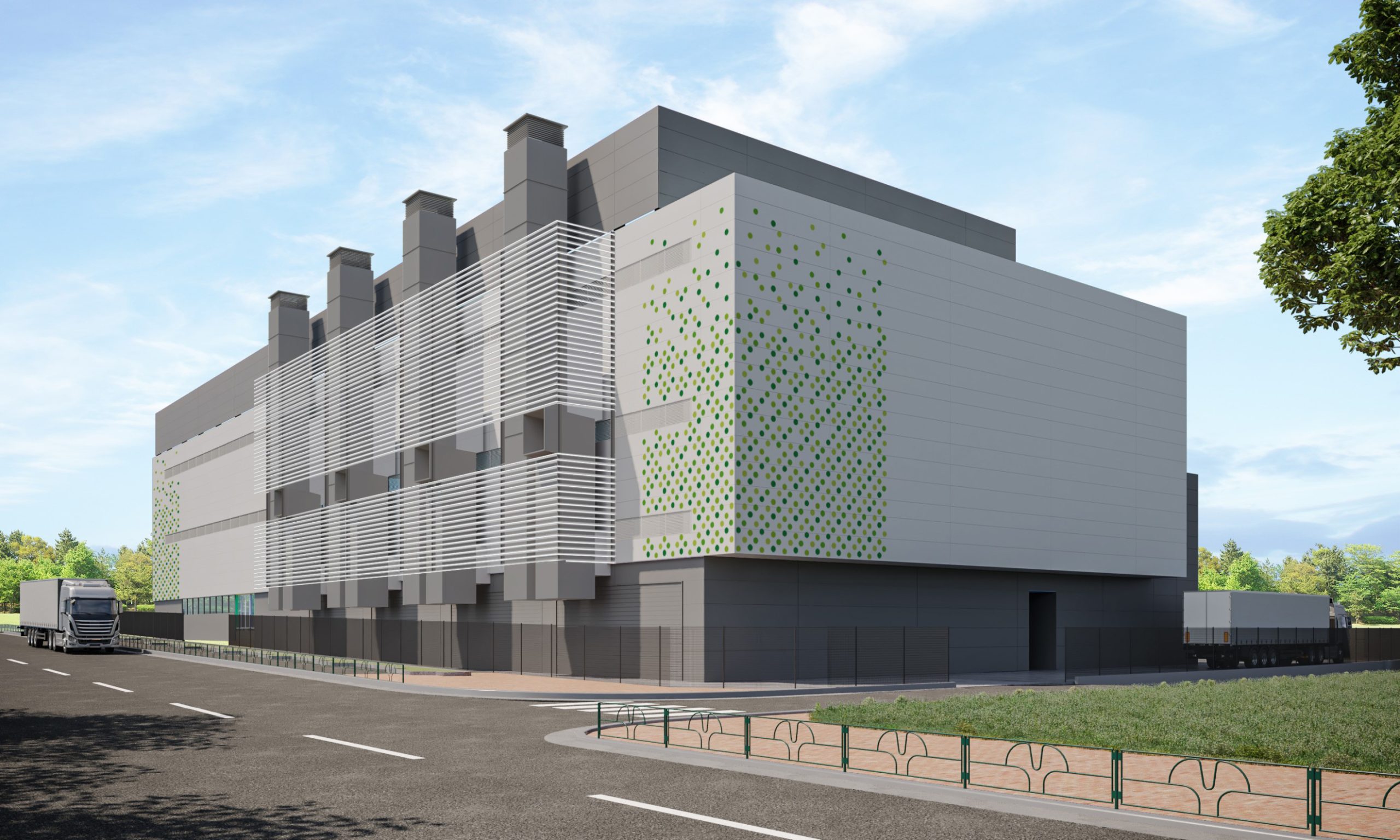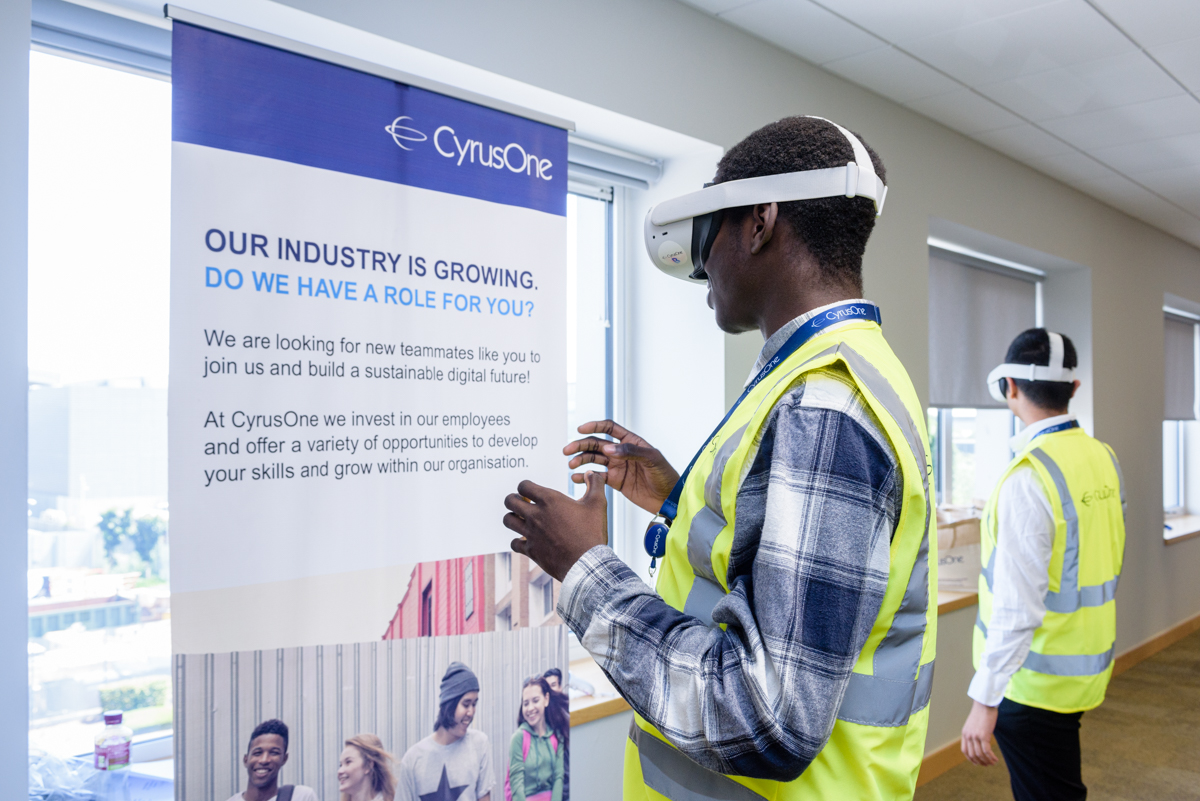Infrastructure Management
Data Centres
Infrastructure Management
News
STACK Infrastructure delivers first data centre in Australia
STACK Infrastructure has announced the completion of its first Asia Pacific (APAC) data centre, located in Melbourne, Australia. The 36MW facility is strategically located on a scalable 72MW campus, in one of APAC’s fastest growing markets for cloud service providers and large enterprises needing robust power, reliability, and scalability in the region.
This is a significant milestone in its ongoing global expansion efforts to meet the world’s growing demand for scalable digital infrastructure and will be soon followed by additional APAC data centre openings in Tokyo, Osaka and Seoul.
Situated on 3.6ha and powered by a 105MW dedicated onsite substation, this 72MW campus features two purpose-built 36MW facilities with separate access points and diverse fibre entry points to accommodate multiple users with separation of security and services.
Both buildings offer efficient air-cooling and flexibility to suit specific client technical, operational and density requirements. The successful first phase 36MW delivery and the upcoming second 36MW development highlights the company’s ability to provide scalable capacity, supporting the rapid increase of client demand.
“We are proud to celebrate the opening of our first data centre in Asia Pacific within the high growth hyperscale corridor of Melbourne,” says Pithambar (Preet) Gona, Chief Executive Officer of STACK APAC. “This first delivery, of many in Asia Pacific, underscores the harmony between STACK’s deep regional delivery expertise and its proven global development capabilities.”
STACK stands at the forefront of empowering cloud service providers and innovators with optionality to meet growth targets across the Americas, Asia Pacific and EMEA. Recent worldwide developments include:
A strategically located data centre campus in Osaka, Japan with 72MW of capacity across three planned buildings.
A 36MW campus in Tokyo featuring 18MW under construction and 18MW of expansion capacity.
In Seoul, Korea, a 48MW data centre opportunity bringing scalability to a growing market.
A planned five-building data centre campus offering 250MW of scale in Central Phoenix with a dedicated on-site substation.
A 200MW campus in Portland spanning 55ac, with 96MW currently available for leasing.
A centrally located 84MW hyperscale data centre campus in Frankfurt.
Isha Jain - 23 August 2023
Colocation
Data Centres
Infrastructure Management
News
CapitaLand completes acquisition of data centre in the UK
CapitaLand Ascendas REIT Management has announced the completion of the acquisition of a high-specification Tier III colocation data centre from an unrelated global data centre operator.
The property is situated in Watford in North West London, UK. The purchase consideration for the acquisition after taking into account the agreed value of the property of £119.4 million is £125.1 million.
Mr William Tay, Chief Executive Officer and Executive Director, says, “As the demand for cloud and digital services continues to rise, we are capitalising on favourable market dynamics to significantly scale up our presence in the data centre sector. London ranks among the top three global data centre markets and is also Europe’s largest colocation data centre market. This Acquisition complements our data centres around London, deepening and boosting our data centre investments in the UK by 54% to S$569.8 million, as well as increasing our exposure in London to 96% of our investments in the UK. Given its strategic location and Tier III specifications, along with its robust tenancy, the property will serve as a strong catalyst in delivering additional value to the REIT.
“We expect our enlarged data centre portfolio valued at S$1.5 billion to contribute a continuous income stream towards our overall DPU growth.”
Rationale and merits of the acquisition
Strategic FLAPD3 location in London, UK to capture growing demand for cloud and digital services
Significantly expands CLAR’s data centre footprint in Europe
Resilient income stream with investment grade tenants
Distribution per Unit accretive acquisition
Isha Jain - 22 August 2023
Data Centres
Infrastructure Management
News
IXAfrica and Tilisi to establish second data centre campus in Kenya
IXAfrica Data Centre and Tilisi Developments are pleased to announce a transaction whereby IXAfrica has signed a term sheet to purchase 11 acres of prime land for the construction of its second data centre campus in Nairobi, Kenya.
The agreement marks a significant milestone for both companies and represents a major leap forward in advancing the data centre infrastructure in East Africa. Due diligence is currently underway to determine the exact size of the campus, with initial estimates pointing to an impressive 30MW+ facility.
Graeme Reid, Tilisi CEO, voiced his enthusiasm for the strategic partnership formed with IXAfrica, emphasising the company’s attractiveness as a prime investment destination for developers. Graeme states, “Our collaboration with IXAfrica is a testament to Tilisi’s appeal as an investment hub for developers. This partnership bolsters our standing as a premier infrastructure developer in the region.”
Guy Willner, Chairman of IXAfrica,expresses his strong belief at the prospect of offering a second site for hyperscalers looking to enter East Africa, “This expansion reaffirms our commitment to the region and our belief in its immense potential for growth and technological advancement. With Tilisi’s industrial parks, high-quality development, reliable power and water supply, fresh air, and advantageous altitude for free cooling, this new campus will provide an ideal environment for our data centre operations. With latency sub-five metres between the two campuses the distance satisfies the maximal and minimal requirements for hyperscale deployments.”
The new data centre campus in East Africa is expected to cater to the increasing demand for cloud computing services, digital transformation, and edge computing applications in the region. By providing state-of-the-art infrastructure, green power availability, advanced security measures, and efficient cooling solutions, IXAfrica is poised to play a pivotal role in bolstering East Africa’s technology landscape.
Click here for latest data centre news.
Isha Jain - 15 August 2023
Data Centres
Green IT
Infrastructure Management
Magnetic north: Scotland’s renewable future as a data centre hub
Kerr Johnstone, Director, i3 Solutions Group
With green credentials that include the UK’s lowest carbon energy intensity, increasing access to RERs, low-cost land and political backing, are the pieces in place for Scotland to fulfil its data centre sector potential?
Scotland has been talked about as a location for big and hyperscale data centres for almost two decades. The geography, climate, access to renewables, and improving subsea connectivity, tick many of the development criteria boxes for data centres. All reinforce the huge potential for the country to attract multiple large scale data centre developments.
Scotland is green. A major positive is its increasing access to renewable power generation resources. Its renewable energy capacity reached 13.6GW in September 2022, a rise of 11.7% in the previous year due in most part to more onshore and offshore wind coming on stream.
The electricity used in the south of Scotland – which includes the central belt – has been the greenest (measured as gCO2e/kWh) anywhere in Great Britain since the turn of the decade. This is according to independent research commissioned by Scotland’s leading data centre and multi-cloud services provider, DataVita.
The data showed that the south of Scotland had the lowest average gCO2e/kWh rate of any region within the United Kingdom, at just over 47g/h since January 2020.DataVita says, in particular periods, an IT workload hosted in Scotland could be 11 times less carbon intense than the worst performing location in the UK and three times less intense than a workload running in London.
On land, under the sea
Scotland’s land cost and site quality are attracting interest.
In May 2023, Scottish Futures Trust/Host in Scotland, Crown Estate Scotland and Scottish Enterprise issued an updated Site Selection Report.
In March 2021, Host in Scotland, partnering with Scottish Enterprise (SE) and Crown Estate Scotland (CES), commissioned a report which drew up a shortlist of sites that are ready for green data centre development projects. From a long list of 80 suitable sites, it named 36 prime locations from the borders to Inverness based on criteria including available power, renewables access, land scale and connectivity.
The updated 2023 Site Selection report allowed previous sites selected to be checked for their availability and updates on their development status to be included. Since 2021, new sites for potential data centre development have been sought by contacting local authorities, various government agencies and property agents. This has resulted in an increase of five new shortlisted sites, representing the best sites for data centre development across the country. Some of these sites are suitable for urban colocation use whilst other sites are considered more suitable for rural hyperscale development.Scotland’s mountainous geography is also a plus. In March 2023, energy giant SSE said, it would invest £100 million in a pumped hydro energy storage facility in the Scottish Highlands.
And going all the way back to 2009, when the Crown Estate licensed its part of the seabed in Pentland firth, to tidal power developer, MeyGen plc, stories of the potential for 800MW data centres running on clean power surfaced regularly. Swiss power giant, ABB provides the grid connection for MeyGen in a deal announced in 2014.
Diverse fibre connectivity to Scotland is improving. Tampnet Carrier is a Nordic based high-speed network operator responsible for over 30% of the traffic between Norway, the UK and Europe.
The company has two routes from Scotland to London. One from its PoP in Edinburgh connects directly to London offering diversity for data transfers. Another route from Edinburgh utilises Tampnet’s subsea network in the North Sea connecting with the burgeoning data centre market in the Nordics.
FARICE-1 is a submarine communications cable connecting Iceland, the Faroe Islands and Scotland. The cable has been in use since January 2004.
Within the country, the Scottish Government says, £1bn has been invested in programmes such as Digital Scotland Superfast Broadband (DSSB), Reaching 100% (R100) and Scottish 4G Infill (S4GI). These, alongside extensive commercial investment, have greatly extended the reach and capacity of fibre networks across the country.
Time to scale
Scotland’s ability to attract hyperscale data centre developments would appear to reside in its renewable power generation capacity and energy storage potential.
As the i3 Solutions Group GHG abatement initiative shows, evaluation of clean on-site power generation; Power storage such as battery (chemical), kinetic, pumped hydro, and gravity; Microgrids (islanded and integrated operation); and new revenue potential of being a grid power supplier, are fundamental considerations for large scale developments.
The location’s initial attractiveness will be viewed through access to thousands of MWs of renewable energy power generation plus its low carbon intensity grid.
However, while power remains the dominant factor, other advantageous considerations around planning, location, design and operation cannot be ignored. The planning environment for data centre development expects integration with local economies, Scotland’s broader economy and adherence to sustainability goals. This could work in favour of developers.For example, in 2021, the Scottish Government passed The Heat Networks (Scotland) Act 2021 to accelerate the deployment of district heating in population centres. This could make metro data centre developments attractive. Use cases for data centre heat reuse in rural locations include Scotland’s historically large and rapidly growing agriculture and aqua culture sectors.
Scotland’s skills base is built on a historical engineering prowess in areas such as transport, oil and gas, which are transitioning to leadership in hydrogen and sustainable fuel and energy alternatives.
On the mechanical engineering design front, the country’s low ambient temperatures and soft water resources provide options for adiabatic cooling and enhanced free cooling opportunities to improve efficiency through low PUE (Power Usage Effectiveness).Scotland is also sparsely populated. Covering an area of 78,782km2, its population density is listed at 67.2 people per km2. Compare this with England, where the population density is over 430 per km2 . That means for site selection there is high quality land available, which in turn creates opportunities for modern buildings with highly efficient electrical and mechanical infrastructure design.
Digital infrastructure requires long term sustainability. All large-scale data centre developments are seeking a clean energy future but many will also require the combination of benefits that Scotland has in abundance.
Click here for more thought leadership.
Isha Jain - 14 August 2023
Data Centres
Infrastructure Management
News
STT GDC announces third data centre at One Bangkok
ST Telemedia Global Data Centres Thailand (STT GDC) has announced STT Bangkok 3, its third data centre in Thailand. Slated for opening by the end of 2023, it will be located within the One Bangkok district, Thailand’s largest integrated mixed-use development in Bangkok’s central business district.
The data centre’s strategic location pairs top-quality commercial spaces with world-class data centre solutions and services, offering its customers high-quality colocation space and low-latency network connectivity critical for digital-focused businesses.
Digital infrastructure remains a critical building block in Thailand's digital transformation journey, promoting economic growth and fostering innovation in the region. According to the e-Conomy SEA Report 2022, by Google, Temasek, and Bain & Company, Southeast Asia’s digital economy comprised of the ASEAN-6 countries is projected to reach a value of approximately US$330bn by 2025. Thailand, with the region’s second largest digital economy, recorded a substantial digital economy value of US$35bn in 2022. This growth can be partly attributed to investment promotion policies in the data centre industry, the growing demand for highly secure data storage facilities, and businesses’ rapid adoption of various cloud services. With increasing digital usage, demand for data centre services in Thailand is poised for continued growth.
Key features of STT Bangkok 3:
A new 2MW data centre in a prime city location that joins STT Bangkok 1 (operational since 2021) and STT Bangkok 2 to collectively provide a total IT capacity of 42MW.
Certified reliability and security: Holds international certifications including Uptime Institute's Tier III, ISO-27001, and PCI-DSS, ensuring enterprise-level reliability and security.
Advantageous location: Strategically located with excellent transportation access, providing businesses with convenient access to digital infrastructure in the heart of Bangkok.
Carrier density: Right from the outset, it will provide access to a diverse range of telecommunication carriers and network service providers. This ensures businesses have access to numerous connectivity options to enhance network resiliency and security.
Commitment to sustainability: In line with One Bangkok’s ambition to set new benchmarks and align to international standards for sustainable development as well as STT GDC’s pledge for carbon-neutral data centre operations by 2030, STT Bangkok 3 will be powered more sustainably with district cooling energy.
The advantages of STT Bangkok 3's low latency connections, carrier density and excellent accessibility will enable tenants within the district to enjoy a combination of robust connectivity options and convenient access to top-notch data centre facilities, further reinforcing One Bangkok as the premier address of choice for businesses.
Click here for latest data centre news.
Isha Jain - 11 August 2023
Data Centres
Infrastructure Management
News
GLP announces new data centre campus in Tokyo
GLP has announced that it has broken ground on Tokyo West 1 (TKW1), its first three-building data centre campus totalling 31MW IT load in West Tokyo, Japan.
Building one represents the first phase of the three-building campus and is expected to be ready for service by February 2025. It is designed to meet both hyperscale and enterprise customer requirements for physical and cyber security, safety, reliability, and sustainability. Buildings two and three representing 10MW and 11MW IT load respectively, will be developed in sequence in the vicinity of the same site. Located in an area with low natural disaster risk to promote stable business continuity, the campus is situated within a network-rich environment and is in proximity to some of the largest enterprise, IT and telecommunications and hyperscale companies. The new facility will also feature amenities including private meeting rooms, offices and common rest areas such as a lounge to provide customers with an optimal working environment.
Leveraging its existing real estate portfolio and core capabilities of acquiring land for development, GLP has assembled a dedicated global team of trusted data centre industry veterans. Combined with experienced local professionals, the team is well-equipped to provide full-scale data centre technical expertise in design, delivery, and operations. TKW1 will be constructed to LEED Gold certification standards and will benefit from GLP’s renewable energy business, offering clean sources of energy to advance the sustainability objectives of its future enterprise and hyperscale customers.
“This ground-breaking marks our first data centre facility in this region and represents a significant milestone as we further establish our digital infrastructure business to be a leading provider in Japan. As a rising data centre hub in Asia, Tokyo is a prime location for our entry into the market and we look forward to serving hyperscale and enterprise customers’ data capacity needs in this region,” says Yoshiyuki Chosa, President and CEO of GLP Japan. “We will leverage our expertise, scale and synergies with our renewable energy business to provide customers with sustainable digital infrastructure to power the future.”
Click here for latest data centre news.
Isha Jain - 11 August 2023
Data Centres
Infrastructure Management
News
Students get inspirational data centre tour with CyrusOne
Engineering students at UTC Heathrow have received a rare opportunity to tour an operational CyrusOne data centre, seeing for themselves the racks of servers used to store computer data (email, website, online transactions and more) for some of the biggest companies in the world, along with the electrical and mechanical equipment needed to support such important infrastructure.
Shortly before school broke for the holidays, seven engineering students visited CyrusOne’s LON1 site based in Slough, where they met Jacob Dowsett, Regional Operations Director, and Steve Hayward, Vice President European Operations. Jacob was especially inspirational, telling the students about his unconventional path into his role, “What we are hoping to do is shed light on this industry and make the route for your generation more straightforward.”
The purpose of the tour was to support the learning these students have been doing on the data services industry as part of their Engineering BTEC course through the Digital Futures Programme. This programme, unique to UTC Heathrow, is designed to open opportunities for students to explore an array of careers within the data services industry, as well as equipping them for other technical careers.
Although the programme has been running since 2021, this is the first time any of the students have visited a fully operational data centre. Having made sure that their clients were happy with the students being shown around, CyrusOne were delighted to offer the inaugural tour.
Jacob also explained how vital it is for students to be able to see the workings of the data centre in person, “It’s so important for the students to be able to visualise these data centres and see for themselves. Obviously, it’s data sensitive, really high security, but without these experiences - showing the students what's actually inside the data centre and what engineering roles there are - they're not going to want to join the industry. They need to see things up and running and see themselves doing it.”
On the day, students were shown a short presentation on what happened at the data centre, before starting the ‘electrical tour’.
Much to the students’ delight, this involved the big switch on of a power generator. They were shown how it was worked by an engineer – but it wasn’t a passive watch. Like all good school trips, the students were armed with a clipboard containing questions they were required to answer. This meant they were actively engaged, listening to the engineers and most importantly learning.
The second part of the tour looked at the mechanical side – the cooling system. Data centre servers generate a lot of heat, so all require some kind of cooling mechanism, in this case an adiabatic cooling system.
Click here for latest data centre news.
Isha Jain - 11 August 2023
Data Centres
Design
Infrastructure
Infrastructure Management
News
Legrand unveils new Starline Series-S Track Busway
Legrand has unveiled the next generation Starline Series-S Track Busway power distribution system. This revolutionary product combines the performance, functionality and flexibility of Starline’s proven track busway technology with the added benefit of an IP54 ingress-protection rating. As a result, the company is meeting the growing commercial and industrial demand for splashproof, highly dust-resistant and extremely flexible electrical power distribution systems.
According to Data Bridge Market Research, the busway market will reach a valuation of US$3.5bn by 2028, growing at a CAGR of 8.6%. This growth will be driven by a growing desire for user-friendly, cost-effective and highly adaptable electrical distribution systems that support changing load locations in environments with limited space.
For over 30 years, Starline has been meeting this need with innovative, easy-to-use track busway designs that reduce costs while maximising efficiency and scalability. With a design that features multiple mounting options, a continuous access slot and configurable plugin units that can be connected and disconnected without de-energising the busway, Starline has helped some of the biggest names in the commercial and industrial space eliminate its dependency on busduct as well as pipe and wire solutions.
The new Series-S Track Busway family of products allows users to enjoy all the benefits of its innovative design anywhere that additional water, dust or other contaminants require up to an IP54 (including IP44) or NEMA 3R rating. This opens its track busway technology for use in wet environments, dusty or debris-contaminated manufacturing, areas with sprinkler or splash-proof requirements, and outdoor applications.
Starline Series-S Track Busway’s protection level extends to its uniquely designed plug-in units, which are offered with a wide variety of watertight IEC and NEMA-rated devices to meet any need. Other features include:
Available in five and 10 foot sections, custom lengths upon request
100-to-1200-amp systems, four pole, rated up to 600Vac or 600Vdc
UL, IEC and ETL certifications
Aluminium housing with corrosion-resistant coating
Splashproof and highly dust-resistant design with watertight IEC and NEMA device options
Click here for latest data centre news.
Isha Jain - 10 August 2023
Cloud
Data
Infrastructure Management
News
G42 Cloud and VAST Data to build a data cloud for AI
G42 Cloud and VAST Data have joined forces in an ambitious strategic partnership to reimagine the future of data-intensive AI computing. G42 Cloud has selected the VAST Data Platform to build a central data foundation for a global network of AI supercomputers and to store and learn from hundreds of petabytes of data.
With a strong focus on harnessing the potential of high-performance computing, G42 Cloud is at the forefront of driving transformative advancements in the UAE and beyond. Leveraging the power of AI to deliver superior performance, it is furthering the development of a powerful AI-optimised cloud infrastructure, designed to make organisations more intuitive, agile and effective in addressing real world challenges.
The strategic partnership demonstrates the scale and power of VAST Data's new approach to building distributed data systems for enterprises and AI service providers. As part of this partnership, the VAST Data Platform will serve as a central multi-tenant and secure data platform that scales capacity and performance to power a multi-architecture high performance computing system as well as the recently announced world’s largest AI supercomputer, Condor Galaxy. In total, a single VAST Data cluster will support multiple ExaFLOPs of AI supercomputing capability.
G42 Cloud chose to partner with VAST Data due to its simplicity, scalability, resilience, and overall cost of ownership benefits. The platform, built on VAST’s Disaggregated Shared-Everything Architecture (DASE), offers G42 Cloud the scalability in both performance and size needed for exascale AI and high performance computing (HPC). Additionally, it provides a global namespace and the multi-tenancy features essential for zero-trust cloud environments.
Click here for latest data centre news
Isha Jain - 9 August 2023
Cloud
Infrastructure Management
IT
News
DigiCert expands its certificate management platform
DigiCert has announced the expansion of its certificate management platform, DigiCert Trust Lifecycle Manager, to provide full lifecycle support for multiple CAs, including Microsoft CA and AWS Private CA, as well as integration with ServiceNow, to support existing IT service workflows.
The platform additionally supports enrolment to a broad range of Microsoft and AWS technologies, providing organisations a unified approach to managing public and private trust for use cases such as biometric authentication, device authentication, WiFi/VPN provisioning, cloud workloads and infrastructure management.
“DigiCert customers place high priority on ensuring continuity of security across diverse IT infrastructure, as data and processes cut across clouds and environments,” says DigiCert’s Chief Product Officer, Deepika Chauhan. “Trust Lifecycle Manager provides organisations a centralised way to secure users, servers and devices across all these environments.”
With support for Microsoft CA and AWS Private CA, it enables discovery, issuance, automation and revocation, including the ability to tag, filter and apply policy to imported and discovered third-party digital certificates. Certificates can be enrolled to a broad set of technologies through ACME, SCEP, EST and other enrolment methods. Its native integration reduces the effort and expertise needed to extend the value of internal CAs, with embedded, pre-built capability that accelerates time to value and eliminates human error.
Additional Microsoft technologies supported with native integration include:
Active Directory, for autoenrollment of certificates and zero-touch provisioning using DigiCert Autoenrollment Server
Windows Hello for Business, for support for certificate-mediated biometric authentication
Microsoft Intune, for management of certificates provisioned to end-entity devices
Azure Cloud Services, for deployment of DigiCert ONE solutions on Azure cloud infrastructure
Additional AWS technologies supported with native integration include:
Amazon Elastic Load Balancer, for governing certificate-mediated authentication to multiple targets
Amazon Cloudfront, for securing CDN-networked domains
Click here for latest data centre news.
Isha Jain - 9 August 2023

Head office & Accounts:
Suite 14, 6-8 Revenge Road, Lordswood
Kent ME5 8UD
T: +44 (0)1634 673163
F: +44 (0)1634 673173









